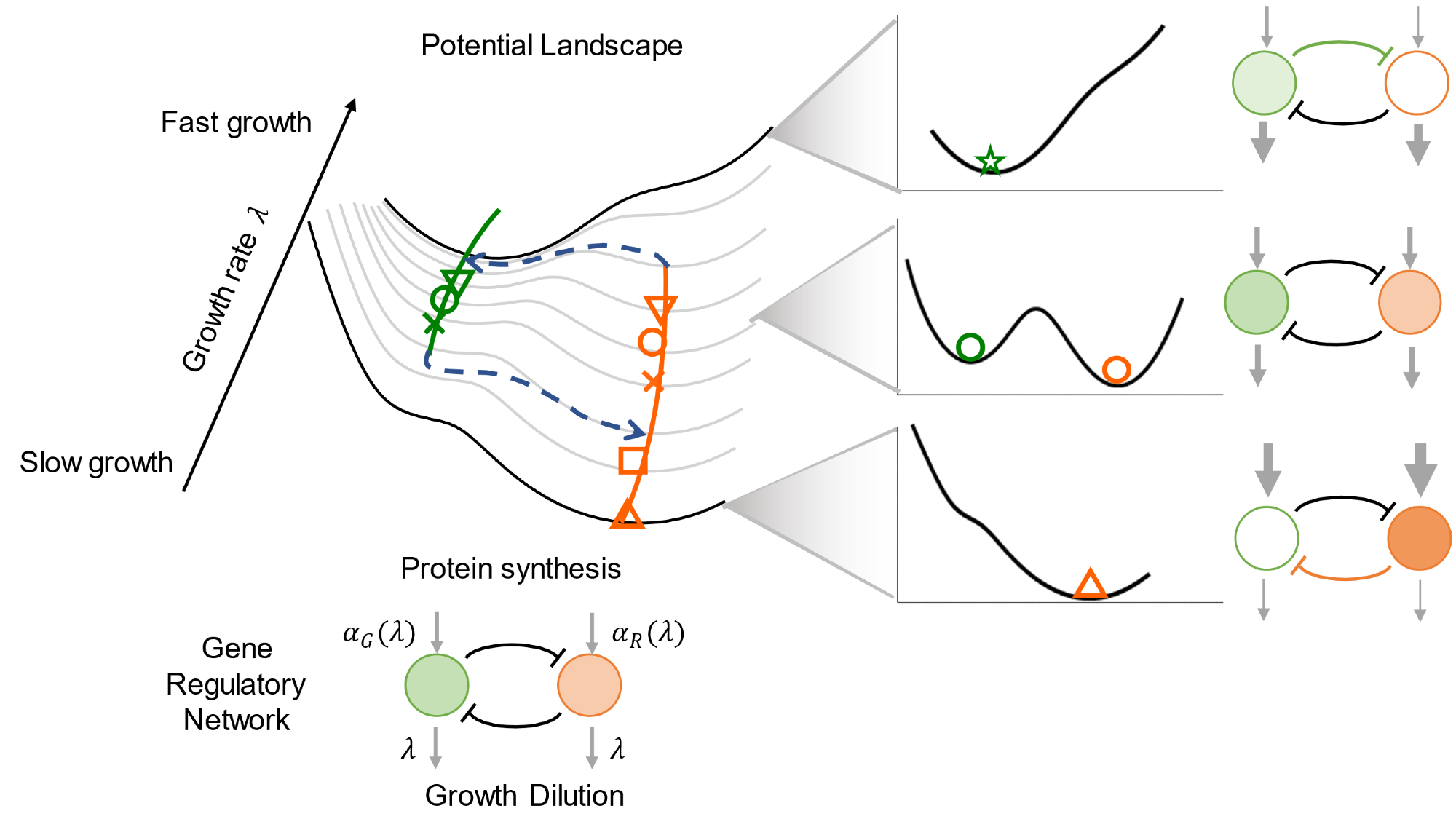Determining cell differentiation trajectories has been done by genes and the regulation relationships among them creating complicated networks.
 Cell growth-induced bifurcation and cell fate decision. Image Credit: Shenzhen Institute of Advanced Technology.
Cell growth-induced bifurcation and cell fate decision. Image Credit: Shenzhen Institute of Advanced Technology.
But it is still hard to comprehend and forecast the cell-fate-decision process with the help of network topology in a bottom-up means.
In recent times, a research group headed by Professor Xiongfei Fu from the Shenzhen Institute of Advanced Technology (SIAT) of the Chinese Academy of Sciences (CAS) has disclosed how the cellular growth rate, global regulation factor, helps in reshaping the cell-fate-decision landscape.
The study was reported in the journal Nature Chemical Biology on March 23rd, 2023.
The scientists made use of a classical synthetic genetic circuit, the toggle switch, as a toy model to learn the scope to which cellular growth rate impacts the phenotypic states of the cell.
Also, they discovered that the gene expression response to growth-rate changes was unbalanced, leading to a growth-rate-dependent phase transition happening between the available toggle’s phenotypic states.
Furthermore, they examined the bistability of the toggle under several growth conditions, thereby disclosing that the steady states bifurcate at a crucial value of the growth rate of the cell. They measured the gene expression capacities at various growth rates and suggested a mathematical model that clarifies the bifurcation emerging from the unbalanced relationship present between the gene expression and growth rates.
To further verify the model's capabilities, we constructed toggles with tuned intrinsic parameters and successfully predicted their steady-state properties.”
Xiongfei Fu, Study Corresponding Author and Professor, Shenzhen Institute of Advanced Technology, Chinese Academy of Sciences
This global regulation mechanism does not depend on specific regulatory factors. It is universal in any genes in the cell-fate-decision network and could also program or emerge a new gene expression pattern with a spatiotemporal order.
It is hard to disentangle the global factors, such as growth rate, from the cell-fate-decision processes. It’s a chicken and egg decision.”
Xiongfei Fu, Study Corresponding Author and Professor, Shenzhen Institute of Advanced Technology, Chinese Academy of Sciences
Professor Fu stated this by noting that the growth rates could be altered as the outcomes of the fate decision.
But with the help of quantitative synthetic biology, scientists could rebuild orthogonal networks that tend to insulate host genetic networks. By adopting this method, it is possible to assess how growth rate impacts gene expression and how they encourage the bifurcation of cell phenotypic states.
Source:
Journal reference:
Zhu, J., et al. (2023) Unbalanced response to growth variations reshapes the cell fate decision landscape. Nature Chemical Biology. doi.org/10.1038/s41589-023-01302-9.